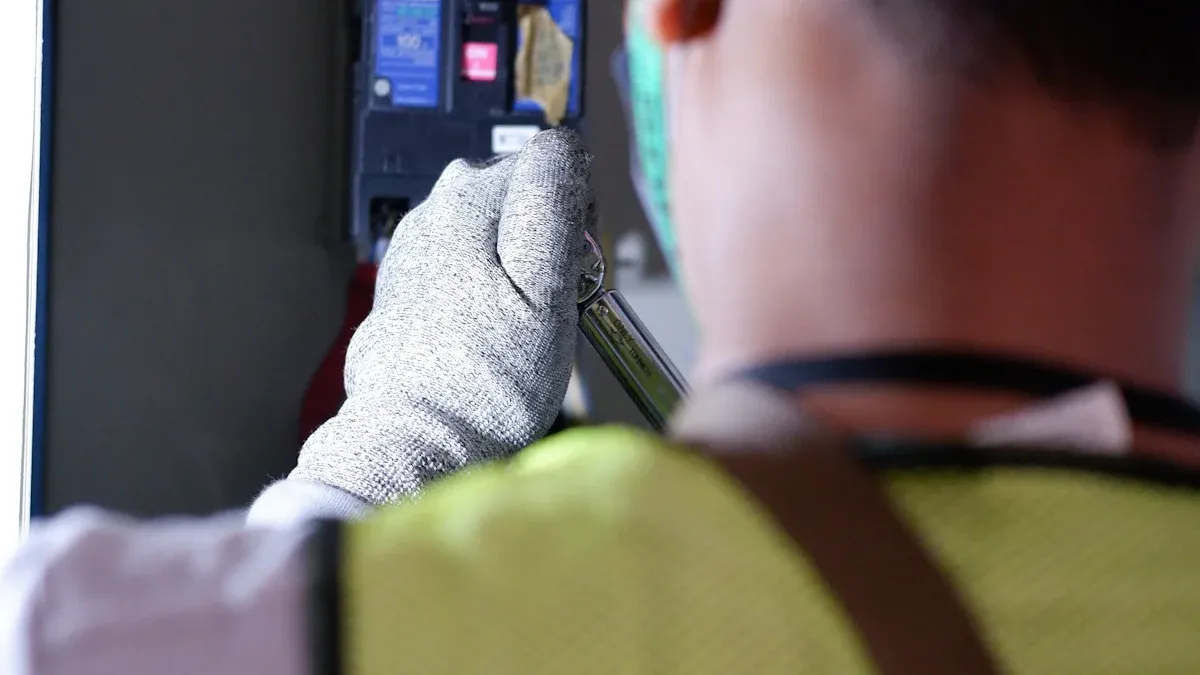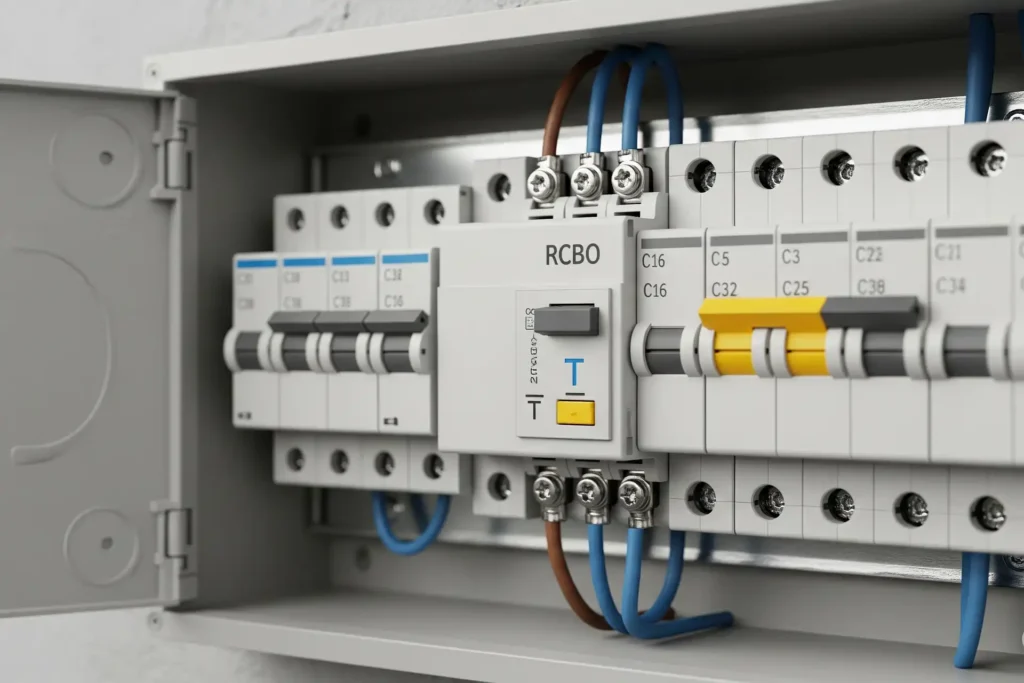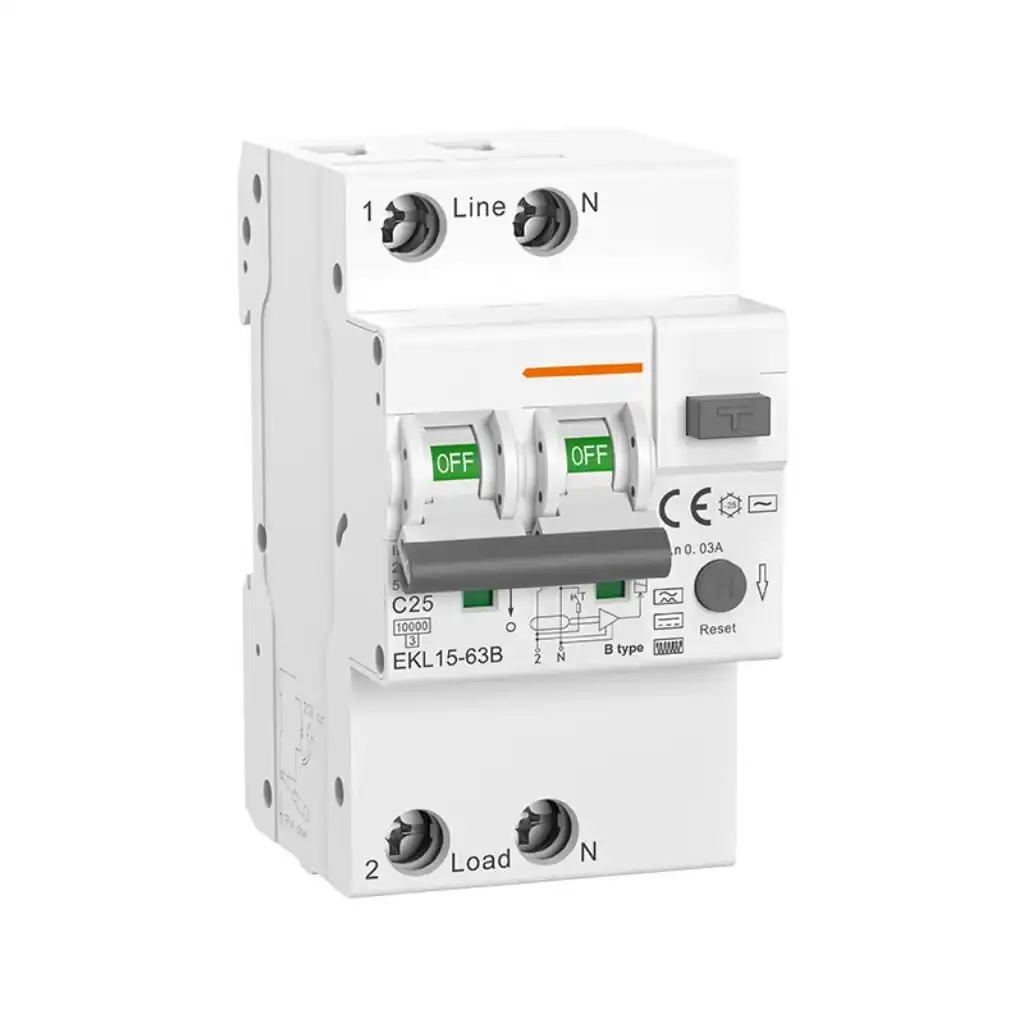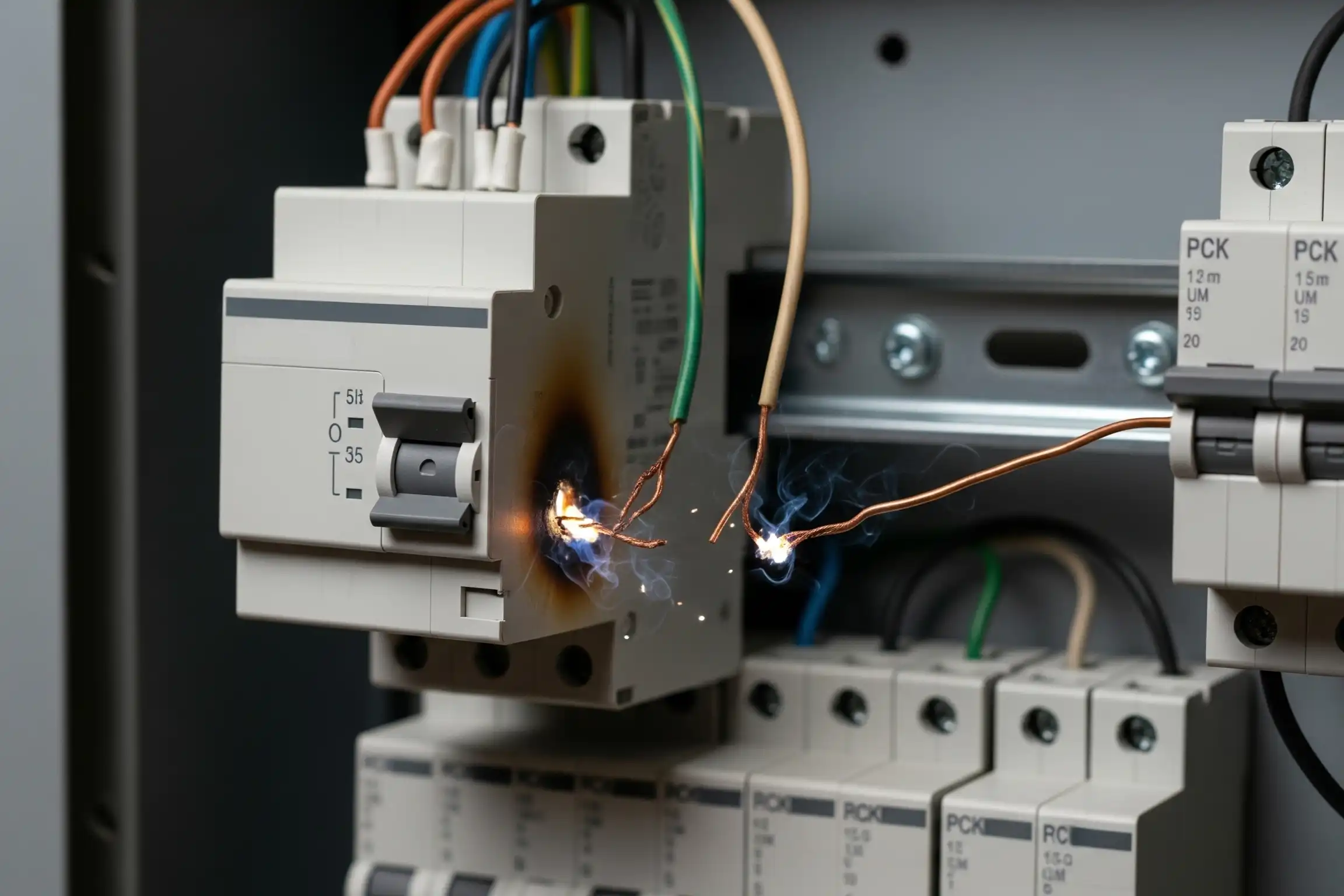The safest RCBO installation site is inside a distribution board or consumer unit, positioned close to the circuits that require protection. Proper grounding at the RCBO installation site ensures optimal performance and prevents electrical hazards. It is important to consider environmental factors such as temperature, humidity, and dust at the RCBO installation site. All installations must comply with local electrical regulations.
RCBOs are commonly installed at sites protecting circuits in kitchens, lighting, and sockets in homes. In commercial settings, they safeguard equipment like ovens and payment systems.
| Setting | Common RCBO Installation Locations and Applications |
|---|---|
| Residential | Circuits for lights, sockets, and appliances, especially in high-risk areas like kitchens. RCBOs prevent current leaks from faulty appliances such as blenders and kettles. |
| Commercial | Circuits for ovens, freezers, lighting, and payment systems in offices, stores, and hotels. RCBOs trip only the affected circuit, allowing other circuits to continue operating. |
Key Takeaways
- Put RCBOs in distribution boards close to the circuits they protect. This helps find problems fast and keeps people safe.
- Pick places that are easy to get to and have clear labels. Make sure there is enough space so you can reach them quickly in an emergency or for repairs.
- Do not put RCBOs in places that are hot, wet, or dusty. Choose cool and dry spots with good airflow so the devices work well.
- Make sure there is good grounding and follow local electrical rules. This helps RCBOs stop shocks and fires.
- Test RCBOs often, keep labels easy to read, and fix any problems fast. This keeps your electrical system safe and working well.
RCBO Installation Site Criteria

Accessibility
A good RCBO site is easy to reach for checks and emergencies. Electricians put RCBOs in distribution boards or consumer units. These spots make it simple to turn off power or do repairs fast.
- RCBOs should be between 1 meter and 1.8 meters high.
- If people in the home are elderly or handicapped, 1.3 meters is better.
- Labels help people find the right switch quickly in an emergency.
- The main switch must not be blocked so anyone can use it.
Tip: Keep the space around the RCBO panel open. This helps you get to it fast if you need to turn off a circuit.
Proximity to Circuits
The RCBO should be close to the circuits it protects. This keeps wires short and lowers the chance of problems.
- Electricians put RCBOs on a DIN rail in the main board or sub-panel.
- Putting the RCBO near where power comes in protects all wires after it.
- Homes with solar inverters or batteries need a separate RCBO for each device.
Environmental Factors
The place where you put the RCBO can change how well it works.
- If it gets hotter than 60°C, the insulation gets weak and the RCBO may not last long.
- Humidity and dust can cause rust or sparks, which can break the RCBO.
- Pick a spot that is cool, dry, and has good airflow for the RCBO.
- Do not put RCBOs where they get wet or very hot.
- In dusty places, use a box with vents to keep the RCBO safe.
Note: Always follow the maker’s rules for temperature and humidity. This helps the RCBO work well for a long time.
Recommended RCBO Installation Site
Main Distribution Board
The main distribution board is the best place for RCBOs. This spot lets RCBOs protect all circuits from problems like short circuits and overloads. Devices such as the CHINT NB1L-20 Slim RCBO keep people safe from these dangers. Modern RCBOs are small, so they fit easily in tight spaces inside the main board.
- The main board is a central spot to watch and control all circuits.
- Quick fault breaking here keeps people and equipment safe.
- DIN rail mounting and good terminal connections make the setup neat.
- Following standards like IEC/EN 61009-2-1 helps keep things safe.
- The main board shortens wires, lowering wiring faults and energy loss.
A tidy main board with RCBOs helps you find and fix bad circuits fast.
Modern RCBOs protect against earth faults and overcurrent at the same time. This means fewer cables and connectors, making things safer and easier to fix. Putting RCBOs in the main board protects the whole electrical system.
Sub-Panel Locations
Sub-panels are also good places for RCBOs, especially in big buildings or places with many circuits. RCBOs in sub-panels keep certain areas or equipment safe. Small RCBOs like ABB’s DS301C fit well in tight panel spaces. This helps electricians protect each circuit from earth faults, short circuits, and overloads.
Sub-panels make fixing things easier. Electricians can work on one area without turning off everything. Fast wiring and easy DIN rail mounting save time when installing or fixing. Sub-panels also lower power loss and cooling needs, helping save energy.
RCBOs in sub-panels are great for hospitals, ships, and old buildings where space is tight and safety matters most.
A neat setup in sub-panels keeps wires short and tidy. This lowers wiring mistakes and makes upgrades easier later.
High-Risk Areas
High-risk places like kitchens, bathrooms, and circuits with lots of sockets need special RCBO protection. These spots are risky because water and electricity can mix, or many appliances are used. Safety studies show socket circuits need extra care. The chance of shock or fire goes up when protective currents build up.
- RCBOs in risky areas cut power fast if they find a problem, usually in 0.1 seconds.
- Sensitivity between 15 to 30mA gives strong protection.
- Good earthing and checking help RCBOs work well.
- Rules like BS 7671 say to split circuits and use RCBOs to stop unwanted trips and boost safety.
Putting RCBOs in every risky area, especially where water is, is very important for safety.
A safe RCBO spot in these places stops problems from spreading. Electricians should use strong wires and follow good ways to mount and label. This keeps people safe and follows all safety rules.
Safety Factors and Compliance
Grounding
Good grounding is very important for RCBO safety. Rules like BS 7671 and IEC 60364-5-54 explain how to ground things. Electricians must connect earth wires and metal parts to the earth rod. Equipotential bonding stops dangerous voltage between metal objects. Earth fault protection devices turn off power fast if there is a problem. This lowers the chance of shock or fire. In TN systems, circuit breakers give earth fault protection. PEN conductors are not used after the main board in places like hospitals. If there is lightning protection, follow BS EN 62305 rules.
- Connecting the transformer’s neutral point to ground helps protect the grid.
- Do not ground the neutral wire twice, or the RCBO may not work right.
- Spread single-phase loads across three-phase lines to balance leakage.
- Do not share neutral or phase wires with other circuits. This helps the RCBO find earth faults.
Good grounding helps the RCBO work well and keeps people safe.
Regulations
Rules for RCBO sites change as technology and safety needs grow. In the UK, BS 7671 says most sockets and cables in walls need RCD protection. The current sensitivity must be 30 mA or less. RCBOs can be used instead of RCDs for each circuit. In the EU, most places need 30 mA RCDs, especially in wet rooms. Austria and Denmark have extra rules for plug circuits and current ratings. In the US, GFCI devices do the same job as RCBOs. Only licensed electricians should install and test RCBOs. New rules, like the 2022 Amendment 2 to BS 7671 and the 2025 updates, mean more RCBOs are needed in homes and businesses.
Rules change to make RCBO sites safer and more reliable.
Maintenance Access
It is important to reach RCBOs easily for checks and repairs. Electricians should put RCBOs where they can be tested quickly. Each RCBO should have a label to show which circuit it controls. Keep space around the panel open for repairs and upgrades. Test RCBOs often to make sure they work and meet safety rules.
| Maintenance Checklist | Details |
|---|---|
| Access | RCBOs must be easy to reach |
| Labeling | Each RCBO needs a clear label |
| Space | Keep the area around the panel open |
| Testing | Test RCBOs often to check they work |
Regular checks and easy access help keep the system safe and up to code.
Mistakes and Best Practices
Common Errors
Electricians sometimes make the same mistakes when installing RCBOs. Safety checks show these problems happen a lot:
- Many do not test RCBOs often or keep records. They forget to write down trip times and tests. This can mean faults are missed.
- Some problems found during checks are not fixed for a long time. Waiting too long makes electrical dangers more likely.
- Adding RCBOs to old consumer units is hard. Old equipment may not meet today’s rules. This can make the job unsafe or tricky.
- Sometimes electricians cut off earth connections. Doing this makes it harder for RCBOs to spot faults fast.
- Not following the maker’s instructions can hurt how the device works. It might even break the RCBO.
Tip: Always write down RCBO tests and repairs. Fix problems quickly to keep things safe.
Installation Tips
Electricians have some good ways to install RCBOs safely:
- Mark supply and load terminals so you know which way power goes. This stops wiring mistakes.
- Pick the right RCD type for each circuit. Type B is best for solar systems and stops unwanted trips.
- Think about power going both ways if you have batteries or generators. RCBOs that only work one way are not good for these setups.
- Read the maker’s instructions and technical guides. This helps the RCBO work right.
- Make sure wires are tight and use the right tools. Loose wires can cause faults or make the RCBO trip too much.
- Put RCBOs in boxes that keep out dust and water. This helps them last longer and work better.
- Test RCBOs often with the test button. Regular checks find problems early and stop failures.
- If the RCBO trips a lot, fix it fast. Check for bad wires or broken appliances to solve the problem.
| Best Practice | Benefit |
|---|---|
| Clear labeling | Helps people in emergencies |
| Correct device type | Gives the right protection |
| Secure connections | Stops faults from happening |
| Routine testing | Shows the RCBO is working |
Note: You do not have to upgrade old setups, but it makes things safer. Always put earth wires back after testing to keep the RCBO working right.
The safest place for an RCBO is in a distribution board or consumer unit. It should be near the circuits that need protection. RCBOs act fast when there is an electrical problem. This helps stop dangers like shocks or fires. Electricians say to read the maker’s instructions before installing. Check the ratings and look for safety marks on the RCBO. Always follow safety rules and use the right grounding. Make sure you meet local laws and codes.
- Electricity can hurt you if you are not careful.
- Only trained electricians should wire and ground RCBOs.
- They help keep people safe and make sure everything is done right.
To stay safe, always ask a licensed electrician to install your RCBO.
FAQ
What is an RCBO?
An RCBO is a device that protects electrical circuits. It combines the functions of a circuit breaker and a residual current device. It helps prevent electric shocks and fires by cutting power when it detects a problem.
What makes a site safe for RCBO installation?
A safe site has good grounding, stays dry, and keeps the RCBO away from heat and dust. The site should allow easy access for testing and repairs. Following local electrical codes also helps keep the installation safe.
What should someone avoid when installing an RCBO?
They should avoid placing RCBOs in damp or hot areas. They must not skip grounding or ignore the manufacturer’s instructions. Loose wiring and poor labeling can also cause safety problems.
What maintenance does an RCBO need?
Regular testing with the test button helps ensure the RCBO works. Electricians should check for dust, moisture, and loose wires. Labels should stay clear and easy to read.
What areas in a home need RCBOs most?
Kitchens, bathrooms, and outdoor circuits need RCBOs the most. These areas have higher risks because of water and many appliances. RCBOs help protect people from electric shocks in these places.
See also
Portable distribution box makes powering up easy
Understanding RCBO Breaker Terminology Made Simple
RCBO residual current circuit breaker with overcurrent protection
What Features Make an RCBO Essential for Modern EV Charger Setups
RCBO and RCCB Explained for Beginners





